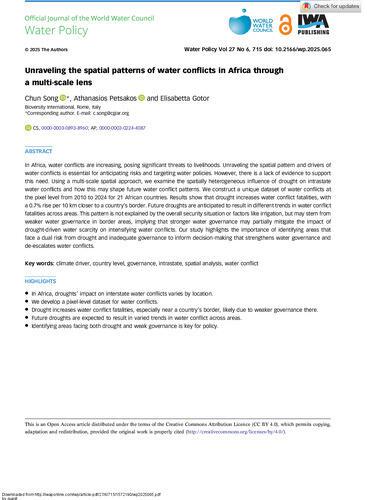In Africa, water conflicts are increasing, posing significant threats to livelihoods. Unraveling the spatial pattern and drivers of water conflicts is essential for anticipating risks and targeting water policies. However, there is a lack of evidence to support this need. Using a multi-scale spatial approach, we examine the spatially heterogeneous influence of drought on intrastate water conflicts and how this may shape future water conflict patterns. We construct a unique dataset of water conflicts at the pixel level from 2010 to 2024 for 21 African countries. Results show that drought increases water conflict fatalities, with a 0.7% rise per 10 km closer to a country's border. Future droughts are anticipated to result in different trends in water conflict fatalities across areas. This pattern is not explained by the overall security situation or factors like irrigation, but may stem from weaker water governance in border areas, implying that stronger water governance may partially mitigate the impact of drought-driven water scarcity on intensifying water conflicts. Our study highlights the importance of identifying areas that face a dual risk from drought and inadequate governance to inform decision-making that strengthens water governance and de-escalates water conflicts.

